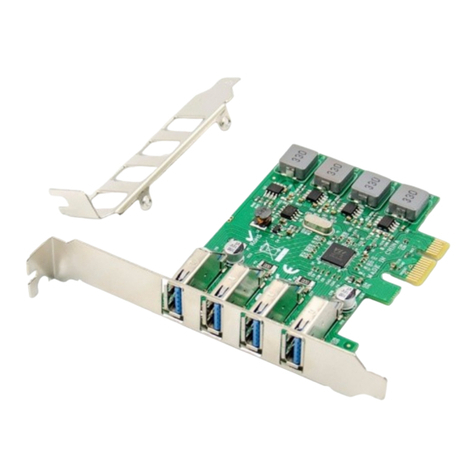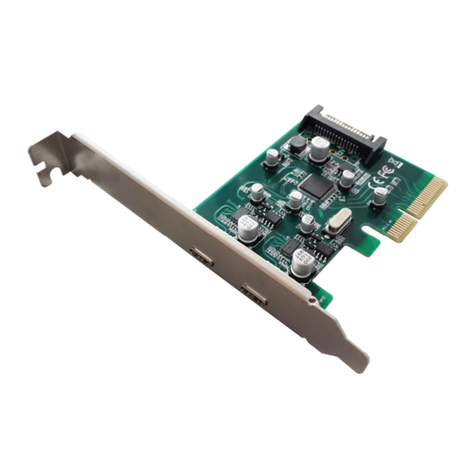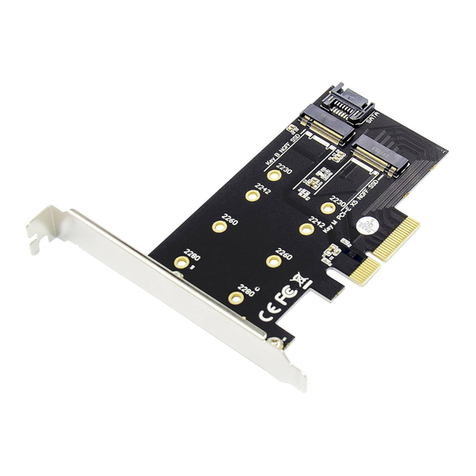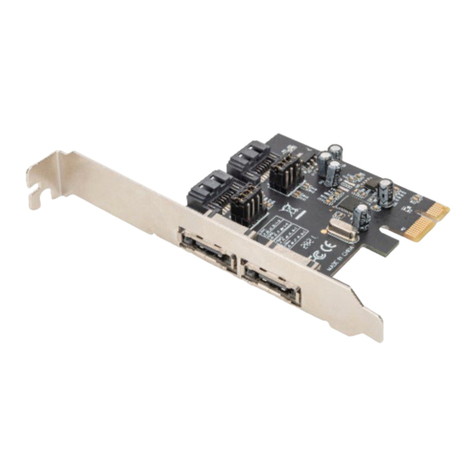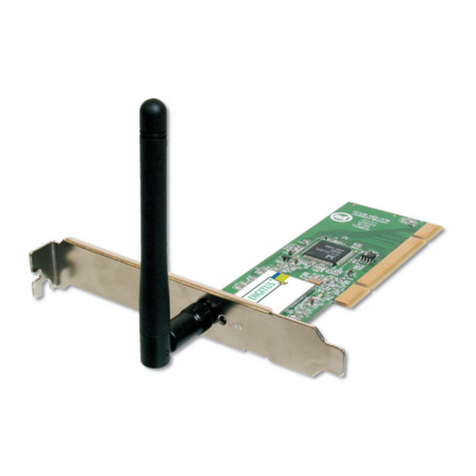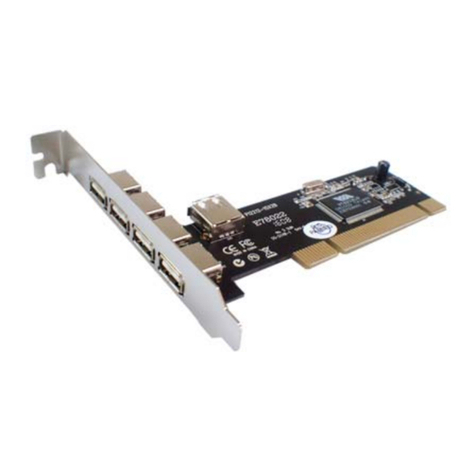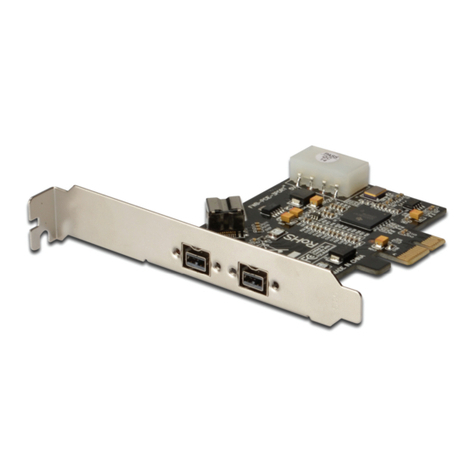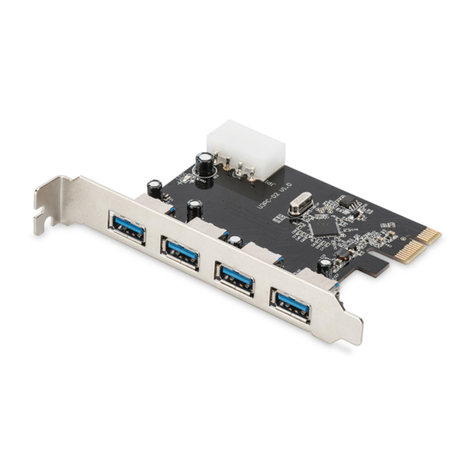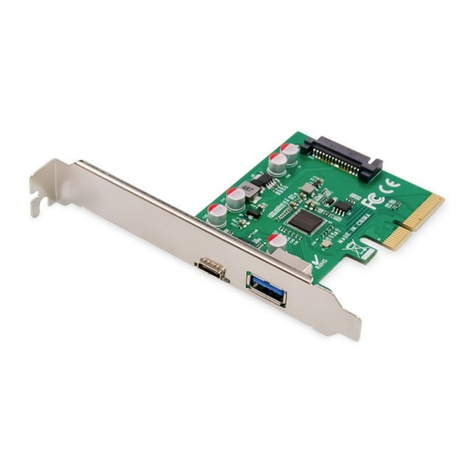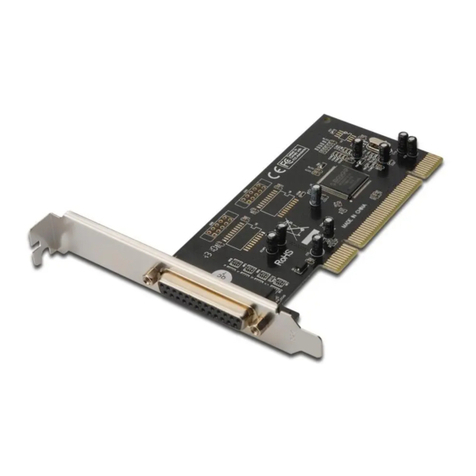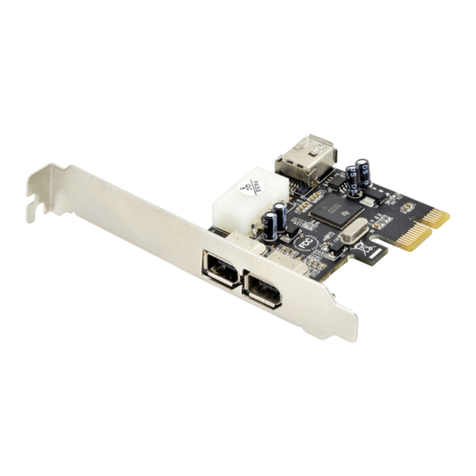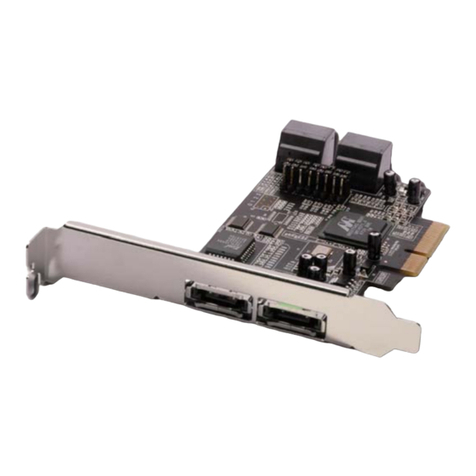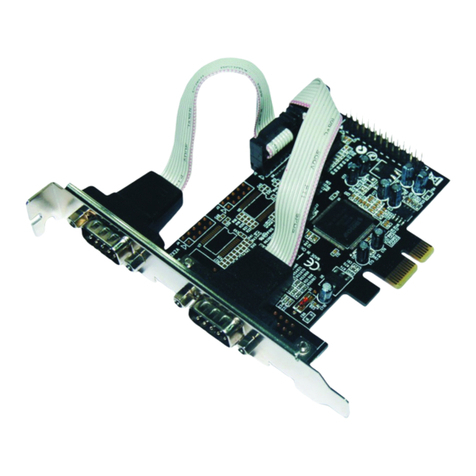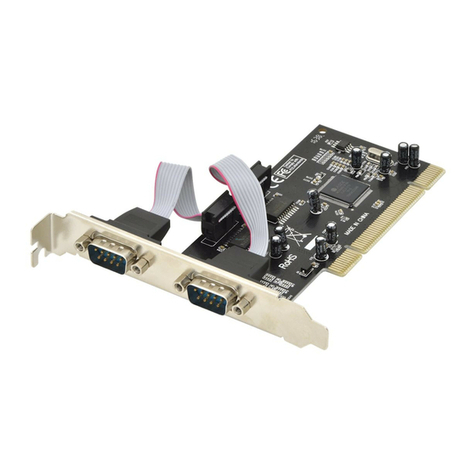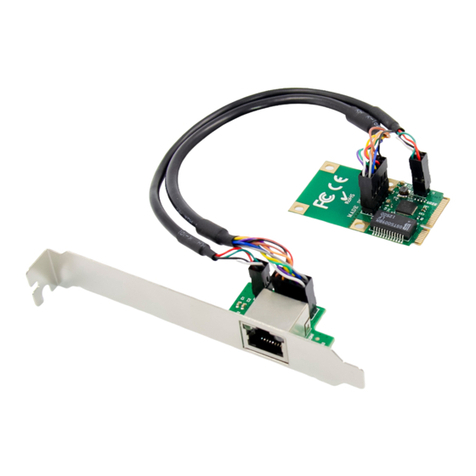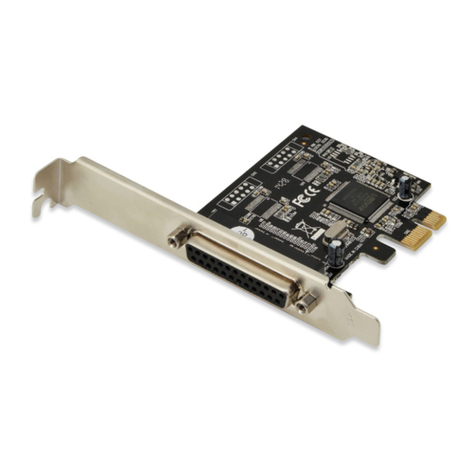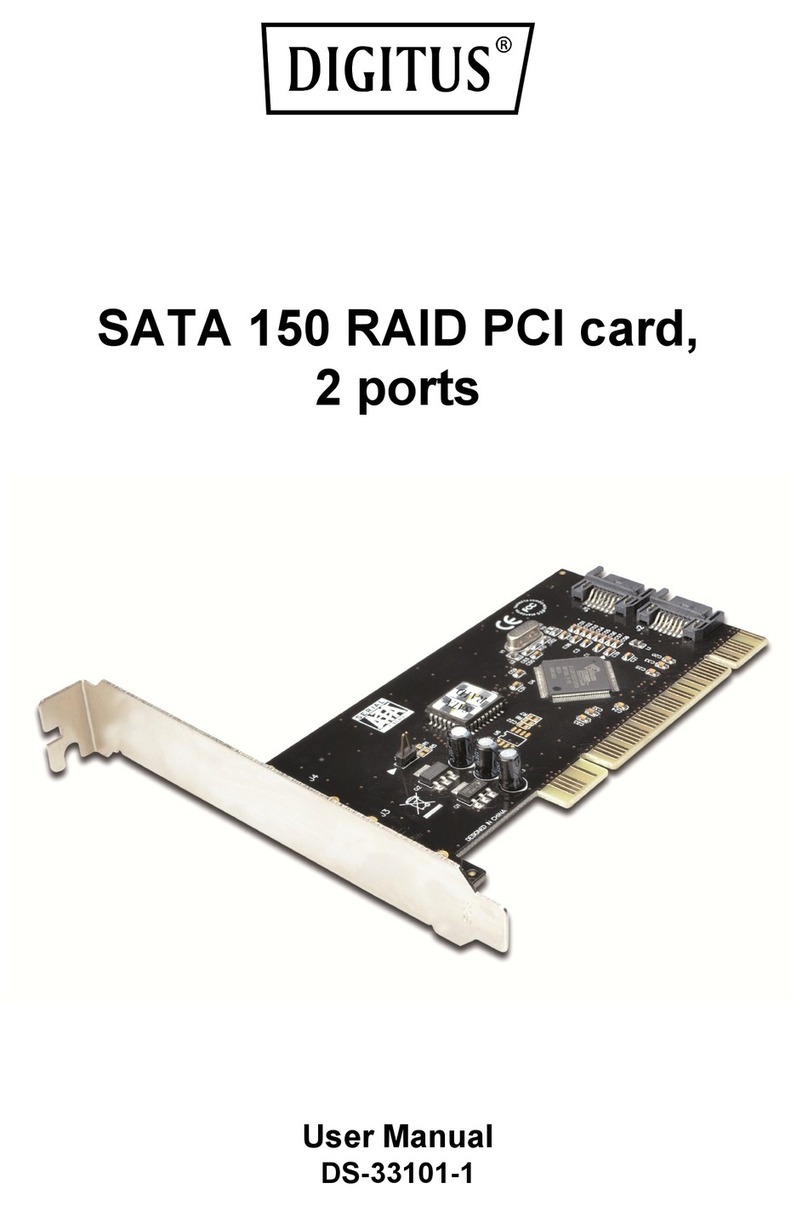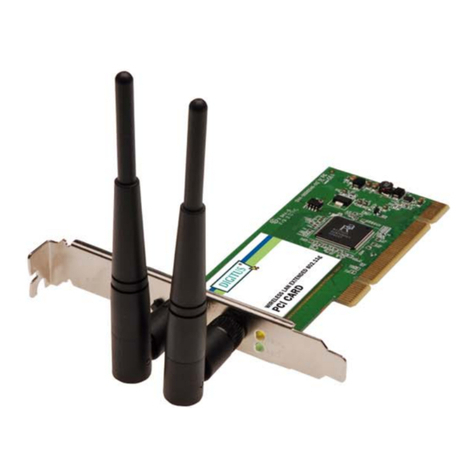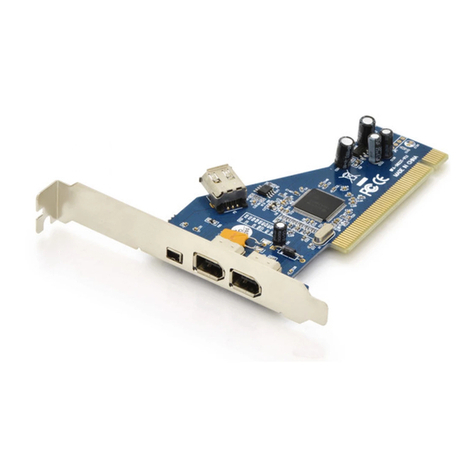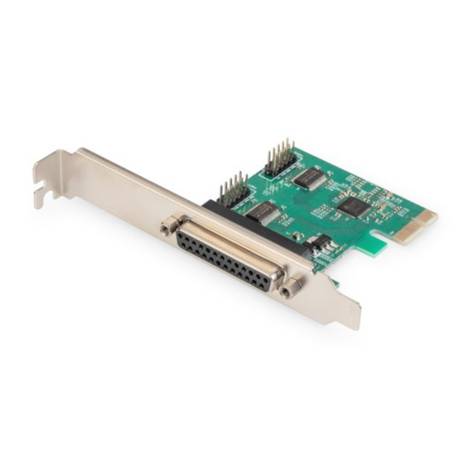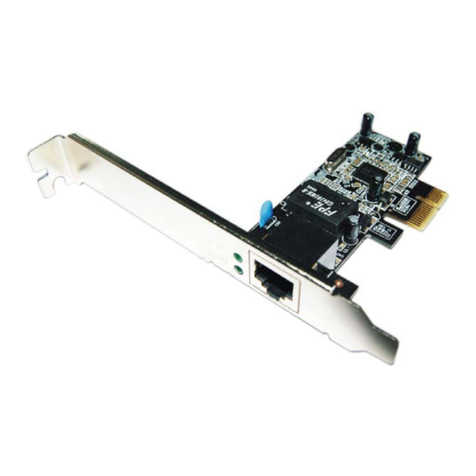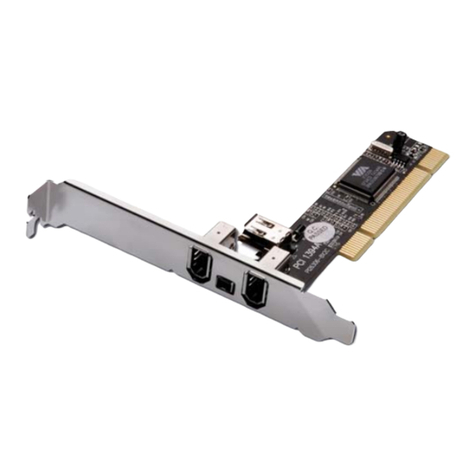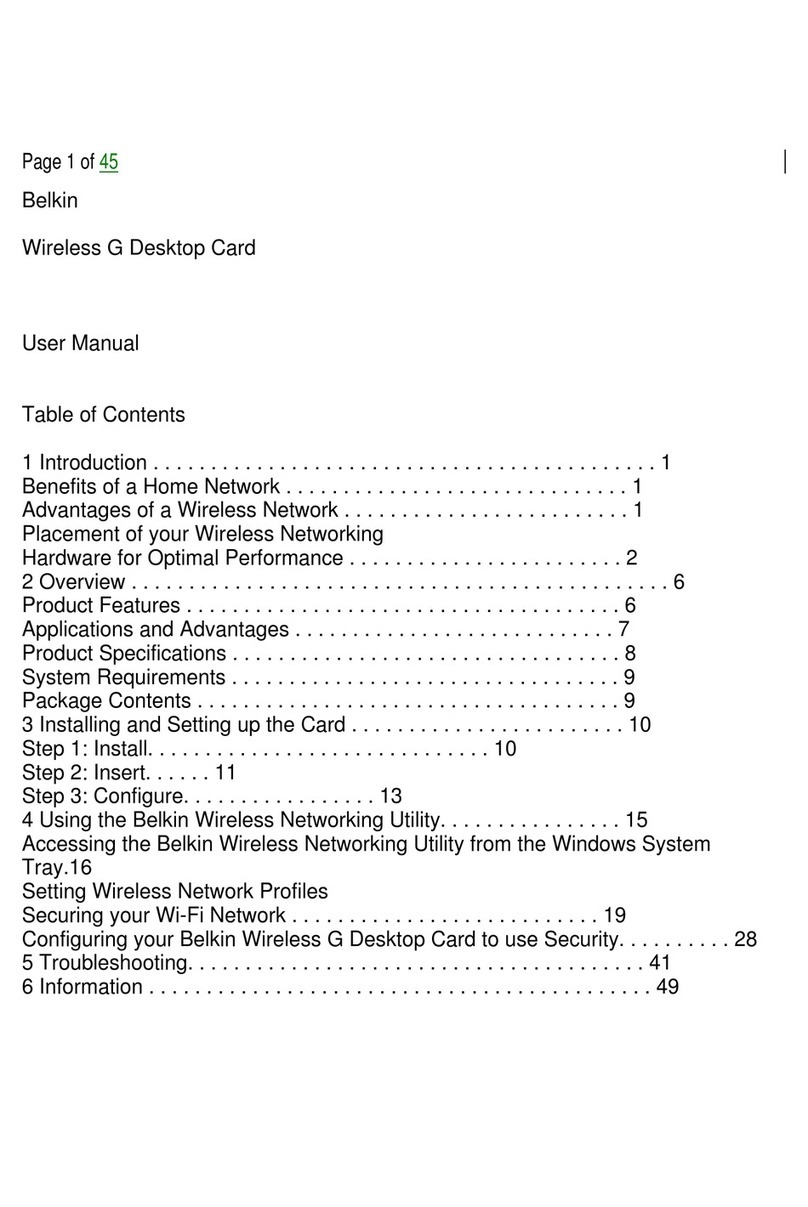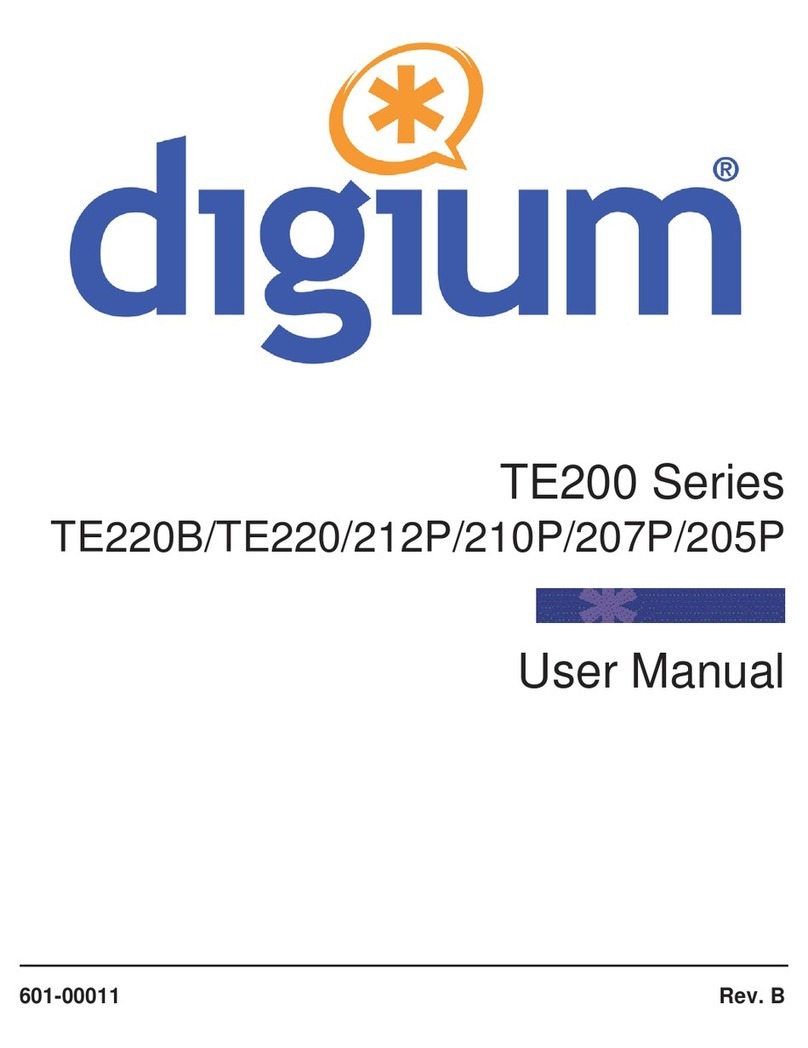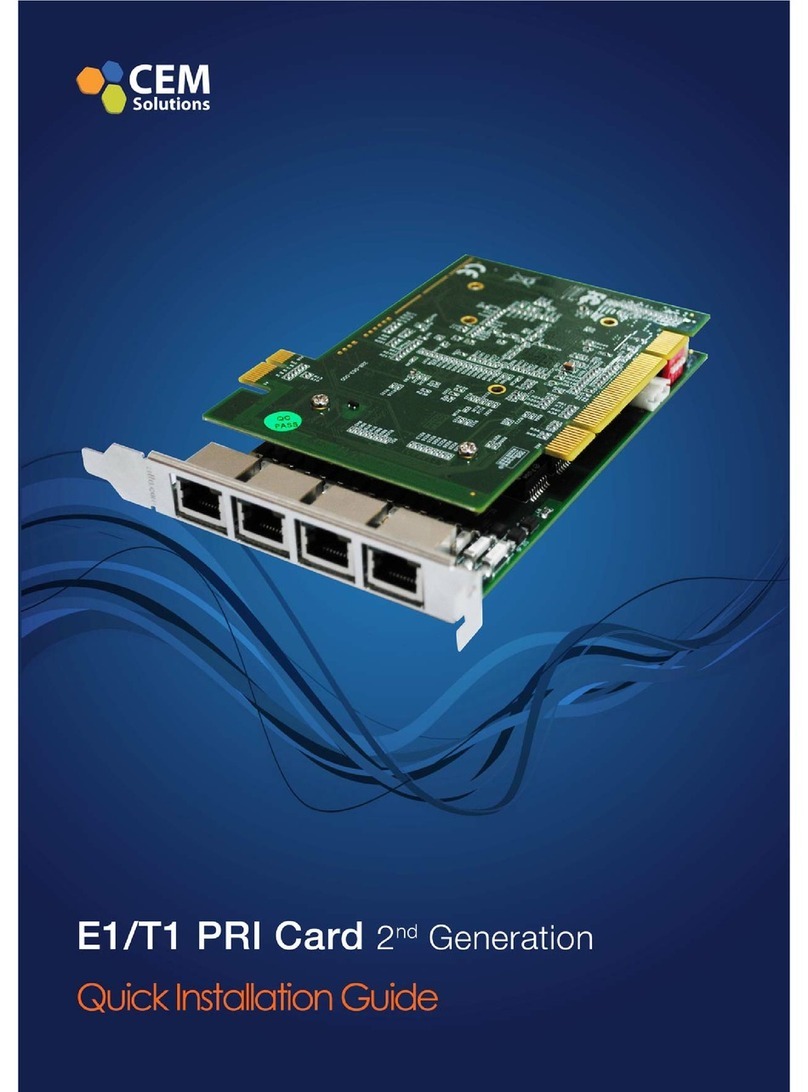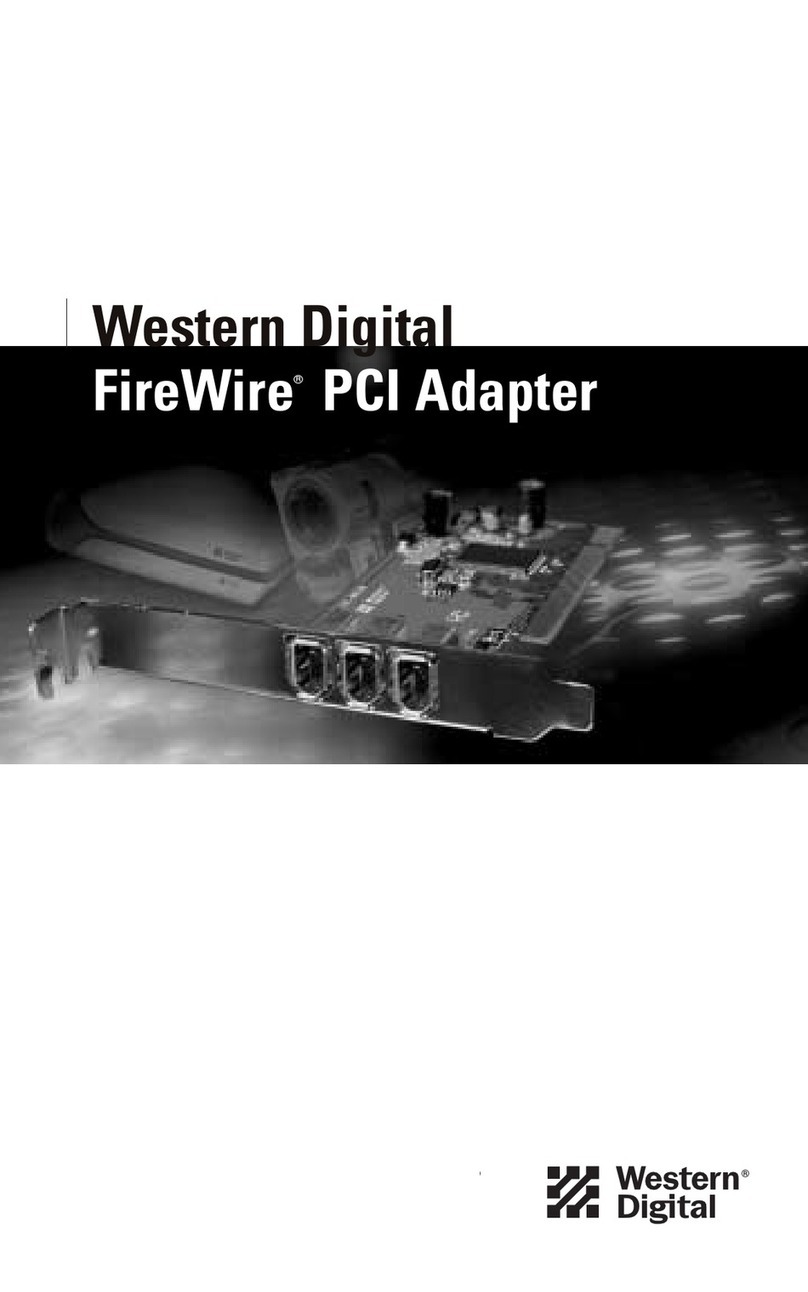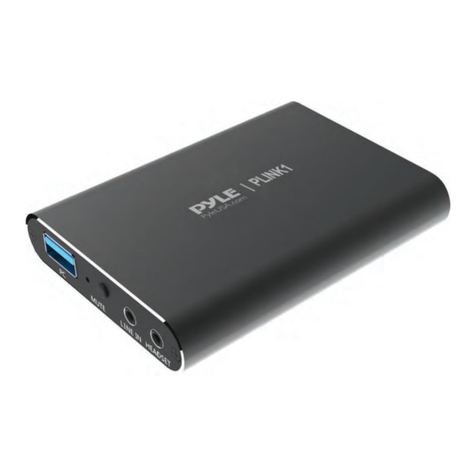SATAIII RAID
PCI EXPRESS ADD-ON CARD
Manual
DS-33160
Product Introduction
The SATAIII RAID PCI Express Add-On Card has two SATA GEN III 6Gb/s
channels host controller within 2.5-inch full-size SSD/HDD interface
that brings server-class features to the desktop .This board enable the
use of the industry’s newest and fastest hard drivers at 6Gb/s while
providing backward compatibility to legacy SATA1.5Gb/s or 3Gb/s
drives. It will enhance system performance for every type of
computer user. Each PCI-Express 2.0 lane provides up to 500MB/S of
throughput. Using the RAID function, the SATA drivers attached to
this controller can be easily configured as 2 individual ports with NO
RAID or with RAID0, RAID1, HyperDuo.
Specification
Compliant with PCI-Express Specification V2.0 and
backward compatible
with PCI-Express 1.x
Supports communication speed of 2.5Gbps and 5Gbps
Compliant with Serial ATA Specification 3.1
PCI Express x2 interface and compatible with
PCI Express X4 , X8 and X16 slots
Supports communication speeds of 6Gbps, 3Gbps, 1.5Gbps
Supports Gen1i, Gen2i, Gen2m, Gen2x, and Gen3i
Hot plug and Hot swap
Support two ports full-size 2.5 inch SSD/HDD interface
Compatible with SATA6G, 3G and 1.5G hard drives
Support Native Command Queue(NCQ)
Support Port Multiplier FIS based switching or command based
switching
Support Partial and Slumber Power Management states
Support RAID function: RAID0, RAID1 and HyperDuo
Chipset: 88SE9230
Drivers support for Windows XP/ VISTA/ Win7/ Win8/ Server2003/
Server2008 R2, Linux2.6.x and above
Package content
1 x SATAIII RAID PCI Express Add-On Card
1 x User’s Manual
1 x CD driver
System Requirements
Supports Windows® XP/ Vista/ Win7/ Win8/ Server2003/
Server2008 R2. Linux2.6.x and above
One available PCI Express x4/ x8/ x16 slot
Hardware installation
1. Turn off the power to your computer.
2. Unplug the power cord and remove your computer’s cover.
3. Insert the 2.5 inch HDD or SSD into the RAID card and install the
attached screws to the hard drive to hold it in place.
4. Locate to an empty PCI Express x4/ x8/ x16 slot on the
motherboard.
5. To install the board, carefully align the card’s bus connector with
the selected PCI-E slot on the motherboard. Push the board down
firmly.
6. Replace the Slot bracket’s holding screw to secure the card.
7. Replace the computer cover and reconnect the power cord.
Marvell BIOS Utility for
RAID/ HyperDuo setup
Warning: All the data on the hard disks connected to the controller
card will be permanently erase in the following actions.
To create a RAID/ HyperDuo virtual disk
1. Power up your computer, skip this section if you are not going to
create a RAID/HyperDuo virtual disk.
2. Press the [ctrl]+[M] key on the keyboard at the same time to
enter the Marvell BIOS utility
3. Once the BIOS is entered, scroll to HBA: Marvell 0 in the topology
pane by the up and arrow key on the keyboard and press Enter
4. Choose Configuration Wizard and press Enter to start creating
the RAID/ HyperDuo virtual disk
5. Select the free physical disk available by using the arrow keys to
scroll though the disks and press Space Bar. After selecting all the
disks needed, press Enter to continue.
6. Choose the RAID Option:
RAID LEVEL: RAID 0- striping
RAID 1-Disk Mirroring
Stripe size: 32k, 64k
Name: any value for the user to input
7. Choose the HyperDuo option:
HyperDuo mode: Safe-mirrored protection
Capacity-cost-Optimized
Keep original data: Yes, No (only available in safe mode)
Preserve the data currently on your
HDD or erase all data
Threshold (%): 10-100 for the users to input
The number defines to percentage
of your SSD the Bios uses to optimize
performance. Default is 90
8. Choose NEXT and press [Y] key to start creating the
virtual disk
9. Press F10 and [Y] key to exit the Marvell bios utility
Note: A HyperDuo virtual disk must at least contain
one SSD and one HDD
To rebuild a virtual disk
1. When a hard disk in a RAID 1 virtual disk or a SSD in a hyperDuo
safe mode virtual disk is defective or the data inside are
corrupted, the Marvell Bios Utility will mark the virtual disk as
degrade.
2. Replace the defective hard disk /SSD with an identical hard
disk/SSD or a hard disk /SSD which has a smaller size within the
allowable value set for the virtual disk.
3. Press the [ctrl] + [M] key on the keyboard at the same time to
enter the BIOS.
4. In the Topology pane. Scroll to the virtual disk, Press Enter and
select the Rebuild option.
5. Select the available replacement hard disk /SSD to be rebuilt to
by pressing Space Bar and then Enter
6. Press [Y] key to start. The utility will show the rebuild status and
the completed percentage. This will take a long time to finish the
whole process and it depends on the size to be rebuilt
Note: HyperDuo virtual disk created in safe mode can
be partially rebuilt if the SSD fails, but not if the
HDD fails.
Driver installation
For Windows® Vista, Server 2008, Win7, Win8, Server 2008 R2
Operating Systems:
1. Start windows and insert the driver CD into the CD-ROM drive,
assume drive A.
2. Windows will automatically detect the SATA card, Right-click
Marvell console SATA Device with yellow mark in the Other
Devices and select Update Driver Software.
3. Select “Browse my computer for driver software”
4. Browse to the following folder on the driver CD according to your
operating system:
a) windows vista, server2008, windows7, windows 8
32-bit:
A:\2010A2\Marvell\92xx\windows vista_2008_7_8\i386
b) windows vista, server 2008, windows7, windows 8
64-bit and server 2008 R2:
A: \2010A2\Marvell\92xx\windows vista_2008_7_8\amd64
5. Follow the on-screen instruction to install the driver.
6. After successful installation, the device is list in the Device
Manager as Marvell unify configuration (under system devices)
For Windows® XP, SERVER 2003 operation system:
1. Start windows and insert driver CD into the CD-ROM drive,
assume drive A
2. Windows will automatically detect the SATA card, select “No ,not
this time” and click the NEXT button to continue
3. Select “install from a list or specific location (Advance)” and click
on the Next button.
4. Browse to the following folder on the driver CD according to your
operating system:
a) Windows XP 32-bit and Server 2003 32-bit
A:\2010A2\Marvell\92XX\Windows2003_XP\i386
b) Windows XP64-bit and server2003 64-bit:
A:\2010A2\Marvell\92XX\Windows2003_XP\amd64
5. Follow the on-screen instruction to install the driver.
6. After successful installation, The SATA controller is listed in the
Device Manager as Marvell 92xx SATA 6G controller(under SCSI
and RAID controllers)
7. For this controller an additional device Marvell Console SCSI
Processer device is detected, select "No, not this time" and click
the next button to continue
8. Select "install form a list or specific location (Advance)" and click
on the Next button.
9. Browse to the following folder on the driver CD according to your
operating system:
a) Windows XP 32-bit and Server 2003 32-bit:
A:\2010A2\Marvell\92xx\Windows2003_xp\i386
b) Windows xp 64-bit and server2003 64-bit:
A:\2010A2\Marvell\92xx\Windows2003_xp\amd64
10. Follow the on-screen instruction to install the driver.
11. After successful installation, the device is listed in the Device
Manager as Marvell Unify configuration (under system devices)
For Linux OS
Linux distributions contain Inbox drivers for AHCI devices. The drivers
are installed automatically during the Linux OS installation
Support:
If you have further questions, please contact our customer support
and you can find more information on our homepage:
www.assmann.com
Declaration
Hereby Assmann Electronic GmbH declares that the Declaration of
Conformity is part of the shipping content. If the Declaration of
Conformity is missing, you can request it by post under the below
mentioned manufacturer address.
